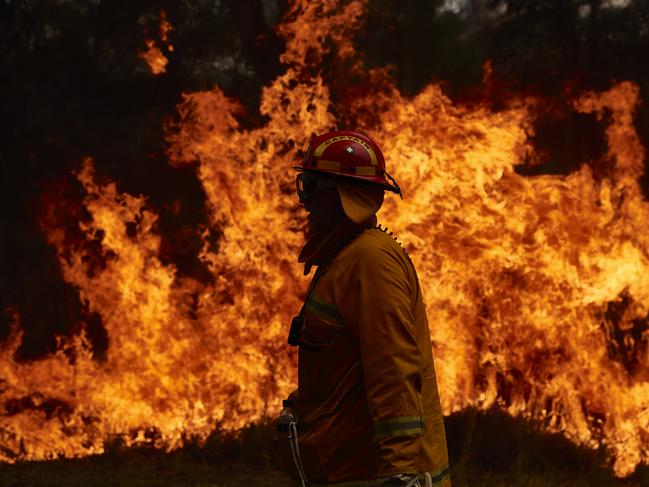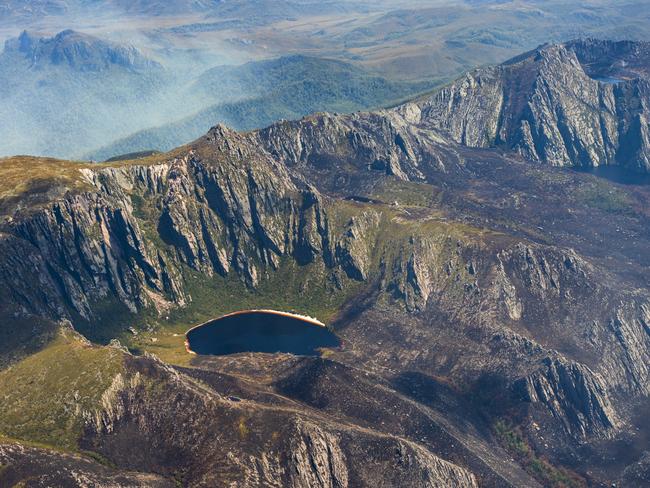Talking Point: Tasmania, build a safer future out of the ashes
DAVID ADAMS: Disasters trigger policy changes — and this summer’s fire season gives Tasmania the chance to take the national lead in managing bushfires

Opinion
Don't miss out on the headlines from Opinion. Followed categories will be added to My News.
AFTER disasters, policy resets often occur. Following this season’s fire conflagration, Tasmania has an opportunity to take a national lead to make us all safer and still enjoy our landscapes.
Tasmania already has a global leader in fire dynamics through pyrogeographer Professor David Bowman and the national Fire Centre he heads up in Hobart. What is now needed is the conversion of new (and some very old indigenous) views into actual policies and practices. The question is, how best to organise this systematically rather than the traditional scattergun approach.
Tasmania has the mechanism to do this through what are called State Policies under the State Policies and Projects Act. These policies are for matters of significant planning importance but few have been developed. Our PAL (Protection of Agricultural Land) policy is an example of a State Policy. The logic of a State Policy is that it shapes all policy settings, precisely what is now needed. The idea of fire is no longer primarily an emergency services operational issue, it is a matter of significant state policy, central to a changing view of our relationship to our ecology and landscapes in which are embedded much of our identity and histories. There are complex and contested ideas to work through, especially resetting our tolerance for risk, what we are willing to invest in prevention, and mix of public, private and community roles.
At the moment the ecology of fire has few mentions in legislation. For example, in the Protection of Agricultural Land policy there is no reference to the critical future role of agricultural land providing a so-called green halo to protect suburban areas fire. Fire prevention is not an objective of our land use planning legislation. While we tend to think Tasmania is not densely populated, we are in fact the fourth most densely populated state, so we should be thinking more about the nature of zones between our settlements and our natural landscapes.

For many years bushfires have been seen as a natural feature of our landscape over which we had limited control and our policy settings needed to focus on fighting fires. We can all see now that fires are and will increasingly encroach on suburban areas and that at scale our current institutions and their fire organisations have limited capacity to protect all lives, property, flora and fauna.
In the future fire policy is likely to be a mix of truly global and hyper- local capabilities. We can already see elements of the global in the rapid deployment of fire personnel and equipment from other countries.
It’s the hyper-local that is not well supported at present. Hyper-local means groups of people down to the level of streets and very small communities. We have seen many spontaneous and some organised examples of this in the current fires, for example where neighbours jointly protect a cluster of houses, share equipment and put out wheelie bins to show who is saying and who is going. Social media has enhanced the capacity for new forms of hyper-local connections. The more such groups have access to firefighting equipment and firefighting skills the more likely they can protect and save lives and property and landscapes.
There should be at least six aspects to a State Fire Policy:
A SET OF PRINCIPLES about the relationship between our landscape, our way of living, our planning systems and, fire risk. Our current land use planning legislation is silent on this hence our current policy framework is essentially focused on protection of assets. We need to shift to a cultural view of where fire and its benefits and risks fit in our future.
PREVENTION. Here there is much to learn from indigenous practices over thousands of years, such as cool burns
A FOCUS on enhanced local skills and fire prevention and firefighting capabilities. Much of the current model is based on limited local (largely volunteer) firefighting supplemented by regional/statewide (and national/global) rapid response resources. Many of the boundaries for fire fighting, a bit like local government boundaries, don’t always reflect the nature of modern communities. In particular the role of local communities in catchment management (such as fuel load management) is ill-defined in Tasmania.
USE OF NEW technologies (eg sensors and new media) to better forecast and manage fire risk.
BUILDING UP catchment management capabilities as key to prevention, and use of water. Tasmania has the advantage of 13 per cent of Australia’s fresh water and 2 per cent of the population. We need to think how we can use this for building community resilience.
BUILDING of our most local institution, local government. Globally, local governments are becoming the guardians of overall wellbeing of their communities and safety is key to this as is security of supply – water, energy, food, transport. We have a tendency to dismiss local government – except in a crisis when they are the first people we turn to.
Many of these ideas are already under way, often in very local communities, but they are not yet reflected in policies or organised at a scale to cope for the future we now have a glimpse of.
A State Policy would nicely frame a conversation to address this and be a national template.
Professor David Adams is a Pro Vice Chancellor — Community, Partnership and Development, at the University of Tasmania.


